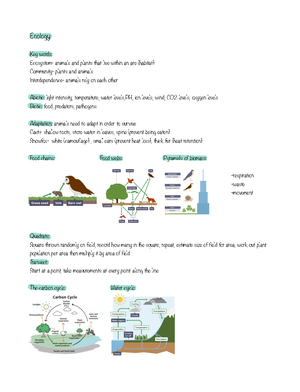- Information
- AI Chat
Was this document helpful?
GCSE AQA Biology - unit 1 cell biology condensed notes grades 9-1
Course: Cellular Biology (BI 315)
12 Documents
Students shared 12 documents in this course
University: St Joseph's University
Was this document helpful?

!
!
Cell biology
Plant and animal cells:
Cytoplasm- where most reactions take place
Nucleus- carries genetic material
Ribosome- responsible for protein synthesis
Mitochondrian- where energy is produced
Cell membrane- what goes in and out of the cell
Chloroplast- where photosynthesis takes place
Vacuole-stores sap
Cell wall- structure
Bacteria cell:
DNA is not in nucleus
Flagella- used for locomotion
Specialisation and differentiation:
Villi - long surface area , cells are tall to provide structure, cells have a long body, muscle cells stretch and contract
Differentiation- All cells start off looking the same and then various different genes are turned off and on which iOS
where it starts to become specialised
Microscopy:
Have developed overtime
Magnification = image height/object height (to convert from micrometers um to millimetres you divide by 1000)










